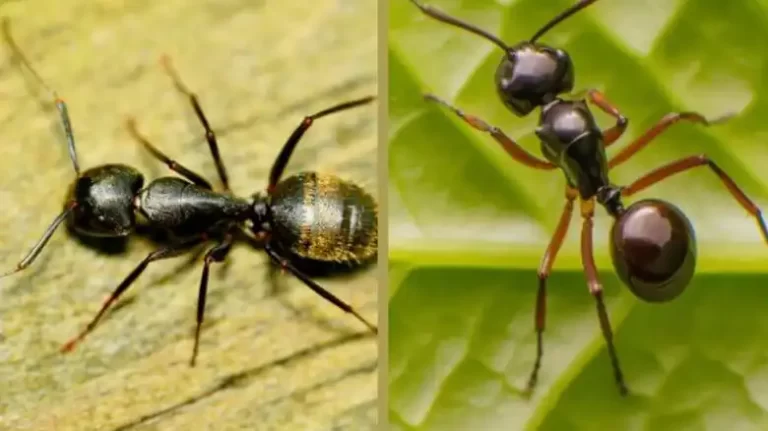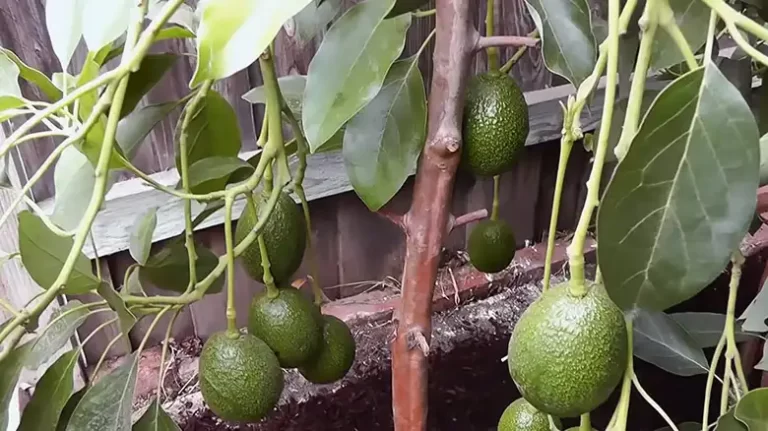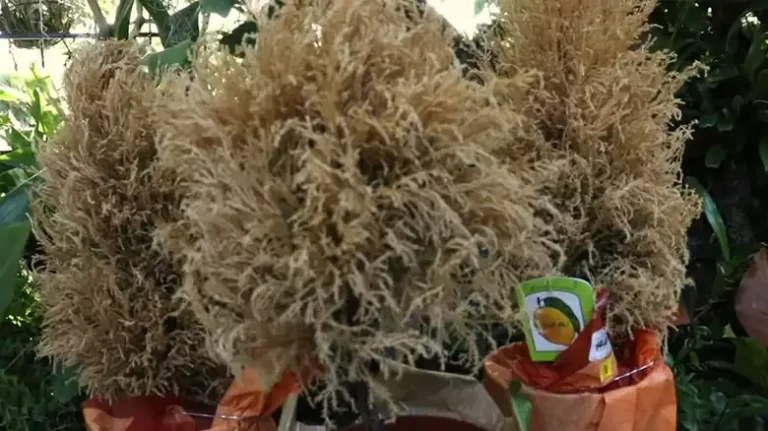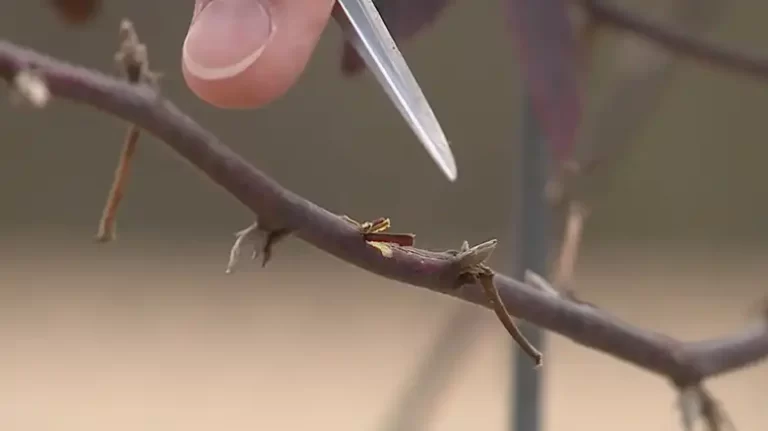How to Get Rid of Gnats on Succulents
Succulents are adored for their low-maintenance beauty, but even the most diligent plant parent can find themselves plagued by a tiny but persistent foe: gnats.
These minuscule insects, often referred to as fungus gnats or soil gnats, can take up residence in your succulent garden, causing damage and annoyance.
Fortunately, you can regain control and enjoy your thriving succulents once more. In this comprehensive guide, we’ll walk you through the steps to eliminate these pesky critters and create the ideal environment for your succulents to flourish.

The Ideal Succulent Environment
Succulents, with their captivating beauty and minimal care requirements, have become a popular choice for plant enthusiasts. However, keeping your succulents healthy isn’t always a walk in the park, especially when gnats come into the picture.
These tiny, bothersome insects can disrupt your succulent haven, but fret not we’re here to guide you through the process of creating the perfect environment for your succulents.
Choosing the Right Soil
The foundation of a thriving succulent garden lies in the soil. Opt for well-draining soil, specially designed for succulents. This type of soil prevents water from pooling around the roots, discouraging gnats from setting up shop. A mix that includes perlite, coarse sand, and cactus mix is your best bet.
Selecting the Perfect Pot
Your choice of pots is more important than you might think. To minimize gnat-friendly conditions, opt for pots with drainage holes. These holes allow excess water to escape, preventing the soil from becoming too wet. Unglazed clay pots are also a wise choice, as they naturally wick away moisture from the soil.
Watering Wisely
Overwatering is a common pitfall that can invite gnats into your succulent garden. Succulents prefer a “soak and dry” approach. Water the soil thoroughly, but then allow it to dry out entirely before the next watering. This helps maintain a moisture level that isn’t conducive to gnat infestations.
Providing Adequate Light
Succulents love light, and giving them the right amount is essential. Place your succulents in a location where they receive bright, indirect sunlight. This not only helps them thrive but also deters gnats, as they prefer darker, damp conditions.
Monitoring for Pests
Keep a watchful eye on your succulents. Regularly inspect them for any signs of gnat infestation, such as discolored leaves, yellowing, or tiny flies hovering around the soil. Early detection can make dealing with the issue much easier.
Gnat Prevention Strategies
Succulents are prized for their unique beauty and low-maintenance nature. However, gnats, those tiny, pesky insects, can quickly turn your succulent garden into a less-than-pleasant place.
The good news is that preventing a gnat infestation is much easier than dealing with one. In this section, we’ll explore effective strategies to keep your succulents gnat-free.
Choose the Right Soil
The foundation of gnat prevention starts with your choice of soil. Select a well-draining succulent mix that doesn’t hold onto excess moisture. Soil that’s too wet can attract gnats, as they lay their eggs in damp conditions.
Use Well-Draining Pots
Just like with soil, your choice of pots can make a big difference. Opt for containers with drainage holes at the bottom. These holes allow excess water to escape, reducing the risk of waterlogged soil that gnats adore.
Water Sparingly
Overwatering is one of the leading causes of gnat infestations. Succulents prefer to dry out between watering. Only water your succulents when the top inch of soil is dry to the touch. This helps prevent excess moisture, making your plants less attractive to gnats.
Diatomaceous Earth
Diatomaceous earth, a natural substance made from fossilized algae, can be a valuable ally in gnat prevention. Sprinkle a thin layer on the surface of the soil. It acts like microscopic shards of glass to deter gnats and their eggs.
Neem Oil Solution
Neem oil, derived from the neem tree, is an organic remedy to prevent gnats. Mix it with water and apply it to the soil. Neem oil not only repels gnats but also disrupts their life cycle, making it more challenging for them to establish a presence.
Sticky Traps
Sticky traps are a simple but effective solution. Place yellow or blue sticky traps near your succulents to catch adult gnats. They’re attracted to the bright colors and get stuck when they land.
Introduce Beneficial Predators
Nature can help you in your battle against gnats. Nematodes and rove beetles are natural enemies of gnats. You can introduce these beneficial predators to your garden to keep the gnat population in check.
Maintain a Clean Environment
Last but not least, cleanliness goes a long way. Regularly remove any fallen leaves or debris from around your succulents. This not only discourages gnats but also promotes the overall health of your plants.
Eradicating Gnats on Succulents
Succulents are fantastic plants to have, but sometimes, those pesky gnats can make a home of your beloved succulent pots. In this section, we’ll delve into the steps you can take to get rid of those annoying gnats and ensure your succulents thrive once again.
1. Identify the Infestation
Before you begin the eradication process, it’s essential to confirm that you indeed have a gnat infestation. Look for signs like tiny flying insects around your succulents, especially when you water them.
Also, inspect the soil’s surface for the presence of gnat larvae, which are small, white, and worm-like. Knowing your enemy is the first step in the battle.
2. Allow the Soil to Dry Out
Gnats thrive in moist conditions, so letting the soil in your succulent pots dry out is a crucial tactic. Avoid watering your succulents until the top inch or so of the soil feels dry to the touch. Succulents are resilient and can tolerate dry periods, which will discourage gnats from laying their eggs.
3. Pruning Infested Areas
If you spot damaged or rotting areas on your succulents, remove them. Gnats are drawn to decaying plant matter, so getting rid of it can help break their lifecycle. Prune carefully and ensure your succulent remains healthy and free from gnat-attracting decay.
4. Change the Soil
If the infestation is severe, consider repotting your succulent in fresh, well-draining soil. This step is especially useful if your current soil mix retains moisture excessively, as gnats are drawn to damp conditions.
5. Use Gnat Traps
Gnat traps can be highly effective. You can either purchase them or make your own by placing a shallow container with vinegar or apple cider vinegar near your succulents. The gnats are attracted to the vinegar and will be trapped inside.
6. Apply Beneficial Nematodes
Beneficial nematodes are microscopic organisms that are natural predators of gnats. You can purchase them at gardening stores and introduce them to the soil. These nematodes will seek out and eliminate gnat larvae.
7. Neem Oil Treatment
Neem oil is a natural remedy that can be used to control gnat infestations. Dilute neem oil with water and spray it on the soil’s surface. Neem oil disrupts the gnat’s lifecycle, preventing further infestations.
8. Isolate Infected Plants
If you have multiple succulents, isolate the infected ones. This prevents the gnats from spreading to healthy plants. Keep the infected plants away from the rest until the infestation is under control.
9. Regular Monitoring
Even after you’ve taken action to eradicate the gnats, it’s essential to monitor your succulents regularly. Keep an eye out for any signs of gnats or damaged plant parts. Catching an infestation early can prevent it from becoming a more significant issue.
10. Be Patient
Lastly, remember that eradication takes time. Be patient and persistent in your efforts. Continue with the measures outlined, and over time, you’ll notice a significant reduction in gnat activity.
Maintenance and Long-Term Control
Maintaining a gnat-free environment around your beloved succulents is crucial to their health and your peace of mind. In this section, we will explore the ongoing steps and practices that will help you ensure the long-term well-being of your succulent garden.
Regular Monitoring
Regularly inspecting your succulents is a vital part of keeping those persistent gnats at bay. Check for signs of infestation, such as discolored or damaged leaves, or the presence of adult gnats in the vicinity.
Soil Rejuvenation
To maintain a thriving succulent garden, it’s a good idea to refresh the soil periodically. This practice helps remove any remaining gnat eggs or larvae in the soil. Transplant your succulents into fresh, well-draining soil to ensure their long-term health.
Sustainable Practices
Incorporating sustainable gardening practices can significantly reduce the risk of gnat infestations in the long run. Implement integrated pest management methods that focus on preventing issues naturally. Minimize the use of chemical pesticides, as they can harm both your succulents and the environment.
Important Questions
Q1: Are gnats harmful to succulents?
A1: Gnats themselves are more of an annoyance than a direct threat to succulents. However, their larvae can be harmful as they feed on the roots, potentially causing damage. Preventing gnat infestations is essential for maintaining the overall health of your succulents.
Q2: Can I use chemical pesticides to get rid of succulent gnats?
A2: While chemical pesticides are an option, they should be a last resort. These pesticides can harm your succulents and the environment. It’s best to try natural and less harmful remedies first to avoid potential damage to your plants.
Q3: How often should I water my succulents to prevent gnats?
A3: The key to preventing gnats is not just the frequency of watering but the method. Water your succulents when the soil is completely dry, which typically ranges from every 2 to 4 weeks, depending on your local climate and the specific type of succulent you’re growing. Ensuring the soil is dry between watering is crucial to deterring gnats.
Q4: Can I use any type of succulent soil mix to deter gnats?
A4: Not all succulent soil mixes are created equal. To deter gnats, choose a well-draining mix that contains ingredients like perlite, coarse sand, and a cactus mix. These components ensure that water drains quickly, reducing the risk of gnats finding a moist breeding ground in the soil.
Q5: How do I know if I have a gnat infestation in my succulent garden?
A5: Signs of a gnat infestation include tiny flying insects near your succulents, yellowing or browning leaves, or stunted growth. You may also notice adult gnats hovering around the soil surface or on your plants. Regularly inspect your succulents for these telltale signs.
Q6: Are there any natural predators that can help control gnat infestations in my succulent garden?
A6: Yes, some beneficial predators can assist in controlling gnat populations. Nematodes and certain species of rove beetles are natural enemies of gnats. You can introduce them to your garden to establish a gnat-repelling presence.
Q7: What can I do to prevent future gnat infestations after getting rid of them?
A7: Preventing future infestations involves maintaining a clean gardening environment, using beneficial predators if necessary, and consistently practicing good watering habits. Avoid overwatering, as this is a common trigger for gnat problems in succulent gardens.
Our Verdict
By creating the ideal succulent environment, implementing effective prevention strategies, and knowing how to eradicate gnats when they appear, you can enjoy a thriving succulent garden without the nuisance of these tiny, persistent pests. Remember to maintain a proactive approach, and your succulents will reward you with their natural beauty and resilience.





